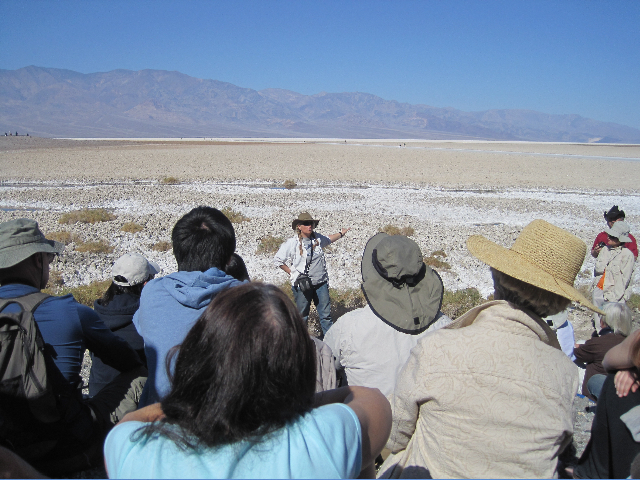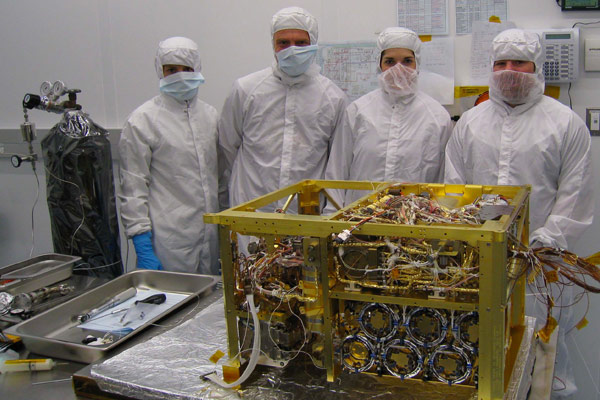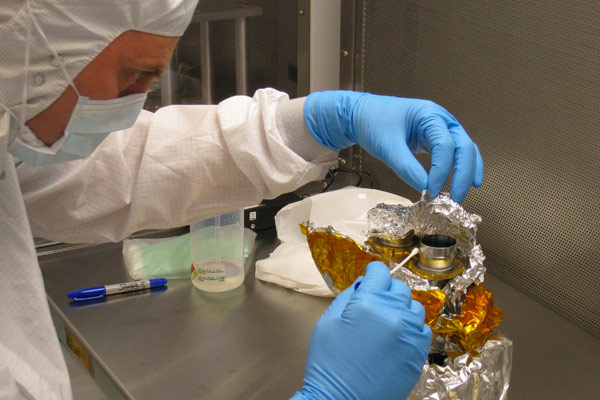20 Mar 2012
Mars and the Mojave Festival
Exploring extremes on the Earth and beyond

Planetary scientist Susanne Douglas describes organisms that live in the salty pools in Badwater basin, pools that are similar to environments that are thought to have once existed on Mars.
The Mars and the Mojave Festival was held in Death Valley National Park from March 9-11, 2012. This festival celebrated planetary analogs: places on Earth that have environments that are (or are thought to be) similar to environments on other planets. In particular, this festival celebrated locations in Death Valley National Park where scientists and engineers come to learn more about the planet Mars. The festival was the result of a partnership between the National Park Service, NASA, the Mars Science Laboratory Curiosity rover team, and the SETI Institute.
The festival opened with an introduction from Death Valley National Park Superintendent Sarah Craighead, followed by a Keynote Address by Chris McKay - a member of the SAM team. His talk, entitled "Curiosity on Mars," gave visitors an overview of the Curiosity mission and what questions it will help us answer about our neighboring planet. He also spoke about SAM and how this instrument suite will contribute to the mission goals.
The festival also included guided field trips to planetary analog sites within the park, such as Badwater Basin, Ubehebe Crater, and Mars Hill, as well as an expo with booths and demonstrations from a number of different groups and organizations, including representation from the Mars Public Engagement Team and the SAM Education and Public Outreach Team.
The festival was very successful: there was an incredible amount of scientist and Park support for the event, and participants provided enthusiastically positive feedback. Planning is underway for the next analog festival. More information will be posted to this website once it is available.
Pictures of the festival taken by photographer Jack Freer are posted here: http://www.overlandphotography.us/Death-Valley/Mars-and-the-Mojave-Festival/22033992_vQmBzX#!p=1&n=25




